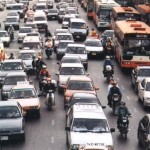 While coronavirus has rid city sweets of traffic to a dramatic extent, congestion has historically been a considerable challenge for transport officials across the world. New research from the University of Houston highlights some of the digital tools officials are using to better manage the flow of traffic.
While coronavirus has rid city sweets of traffic to a dramatic extent, congestion has historically been a considerable challenge for transport officials across the world. New research from the University of Houston highlights some of the digital tools officials are using to better manage the flow of traffic.
The researchers analyze a range of interactive technologies, from roadside cameras to Google Maps, and find that effective use of them can help to manage traffic such that road expansion projects aren’t needed.
Indeed, such Intelligent Transportation Systems (ITS) were found to save $4.7 billion per year in lost productivity, 175 million hours in travel time, and 10 billion pounds less CO2 each year.
Smooth traffic
The researchers analyzed longitudinal data from a range of ITS technologies that had been deployed across 99 urban areas in the United States between 1994 and 2014, including New York, Washington D.C., Chicago and Houston.
The researchers highlight that the technology has continued to advance since 2014, so it’s likely that the savings identified are going to be even greater today. They reveal that the technology is typically most effective at reducing traffic congestion, both because commuters use online services to access traffic information, and because governments incorporate more advanced functions into their travel information systems.
Suffice to say, neither application nor benefits were uniform across each city, and the authors cite the example of Houston itself, which hasn’t adopted the 511 travel information system, but does collaborate extensively with private companies to design and develop their own systems for roadside cameras, radar detection sites, and messaging signs.
The authors hope that their work reminds officials that building more capacity is not the only avenue open when exploring ways to get more out of the road network, and that smart use of technology can significantly improve network optimization.
“Traffic is even worse than before since people move where the roads are built and drive more,” the researchers explain. “The city is growing, but there are alternative ways that do not impose some much demand on roads with the intelligent use of technology in parallel.”